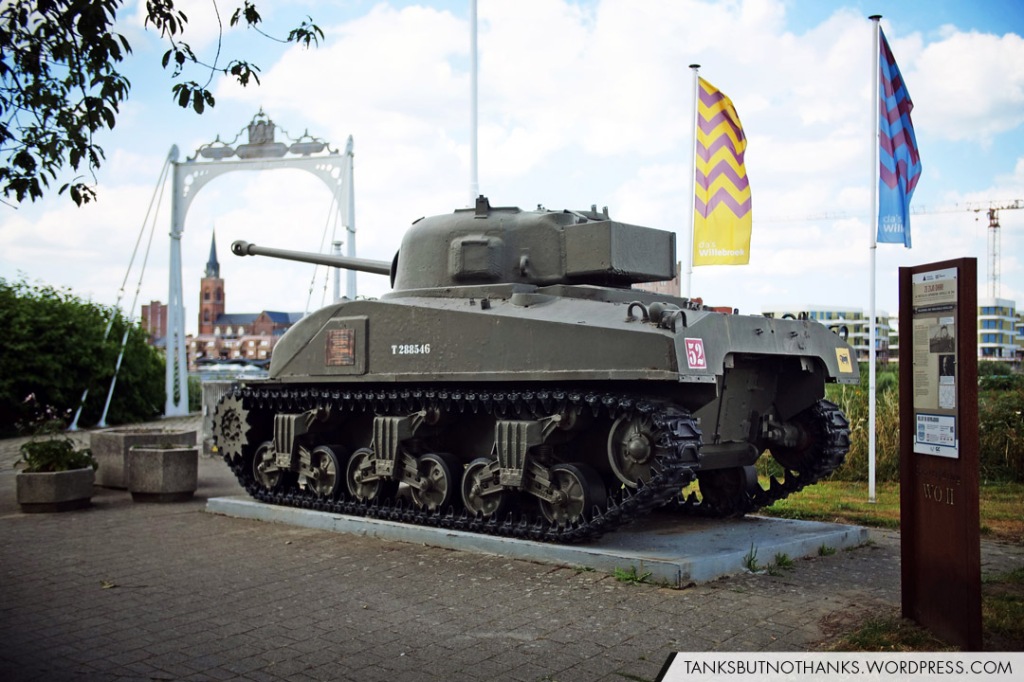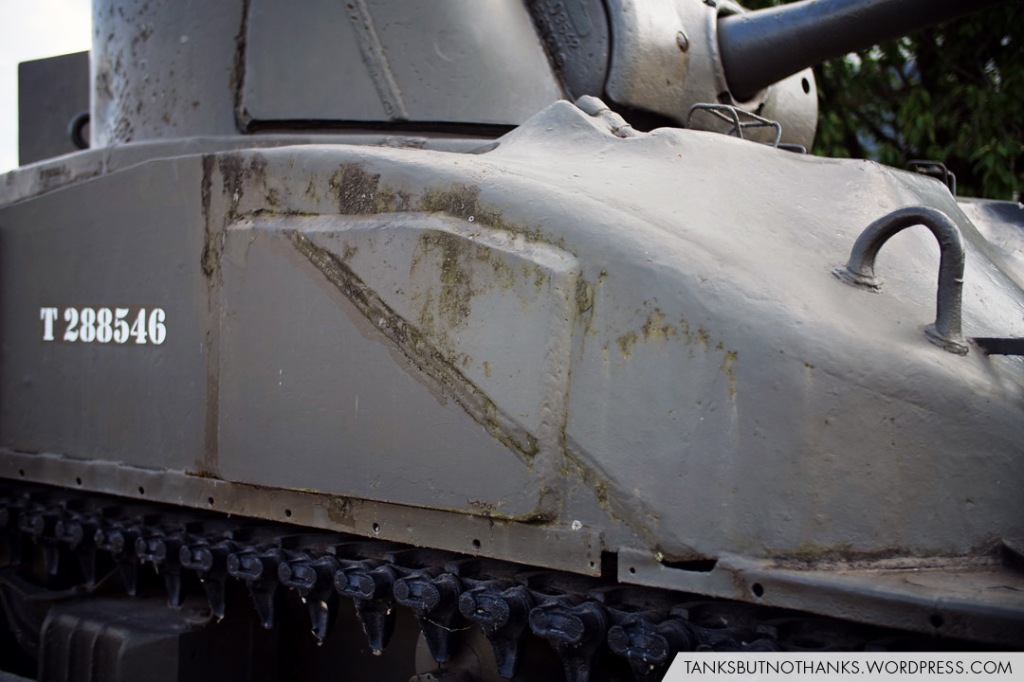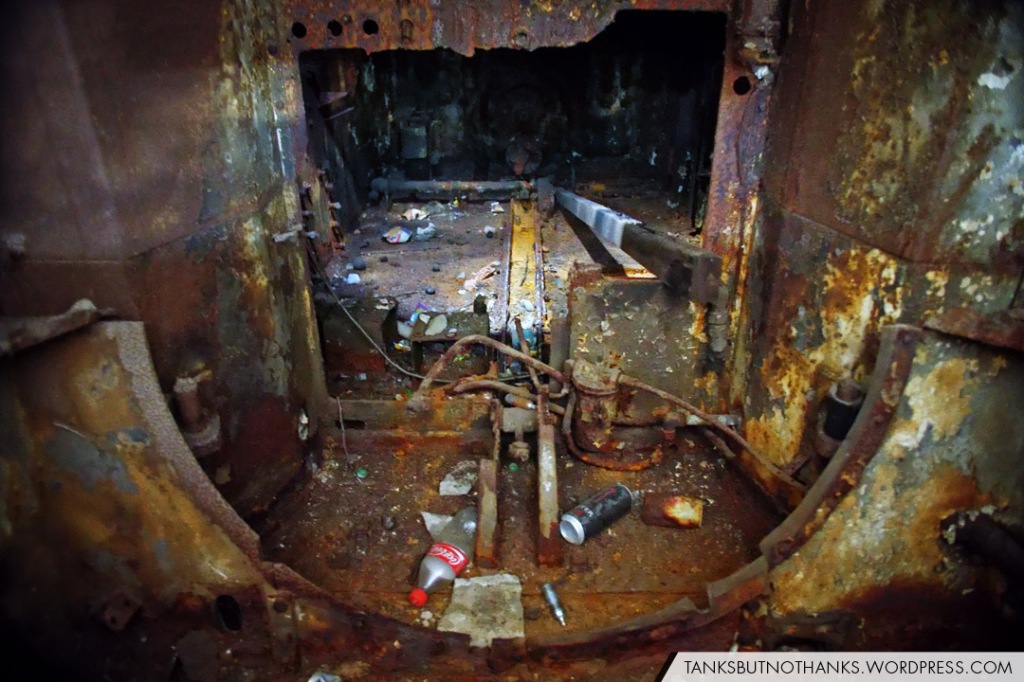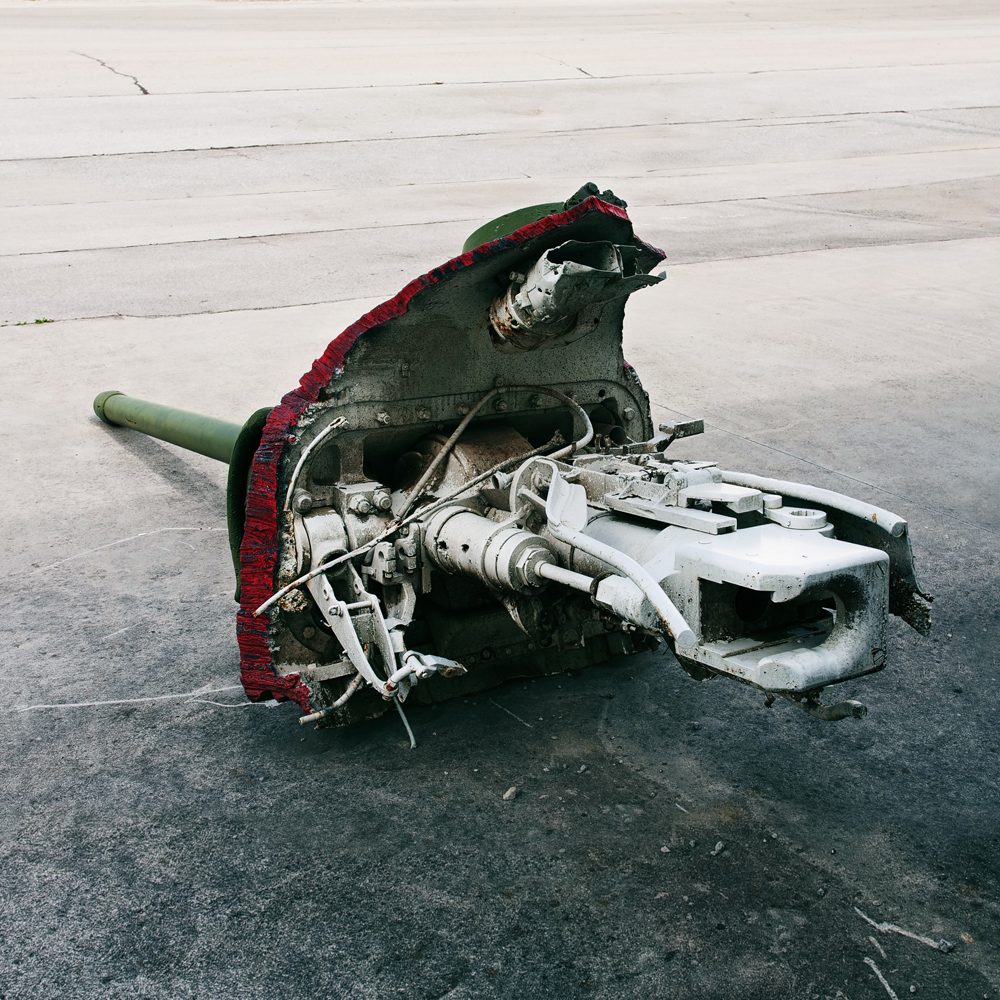Type: Medium Tank/Cruiser Tank
Nation: United Kingdom
Period: World War 2
Location: Klein-Willebroek, Belgium

Best of both worlds
The “Composite hull” Sherman combined the welded hull of the standard M4 with a rounded M4A1-style cast front. Chrysler came up with this design in 1943, because a large part of the time-consuming welding work on the first generation M4 was spent on its overly complex glacis plate. By replacing this part, the tank became much easier and cheaper to build. The Composite M4s that left the Detroit Tank Arsenal in September 1943 were also the first “large hatch” Shermans to be produced. The Ordnance Board had initially ordered all of the upcoming second generation M4s, M4A2s and M4A3s to be built as Composites, until Fisher Body presented a ballistically superior one-piece glacis plate that made the Composite hulls obsolete in June 1943. However, as Chrysler had already changed the production lines, they went on to build the M4 Composite as a transitory model starting in August 1943. Some 300 additional large hatch Composites were produced by ALCO.

Between two stools
Chrysler’s 1,676 Composites were among the last 75 mm M4s to be built in January 1944. By that time, the Detroit Tank Arsenal had already started production of the M4(105), which was the only second generation version of the radial-engined M4 to be continued. Before switching to the large hatches, Chrysler had built approximately 50 small hatch Composites in August/September 1943 – but the exact production numbers are not entirely clear. The same unfortunately goes for the aforementioned ALCO vehicles. The terms “M4 Composite” and “late-production M4” have been popularised after the fact to differentiate this variant from the regular M4, but the official wartime documents never listed it as a separate model. Only the British Army gave it a proper designation when they received it under Lend-Lease: Sherman I Hybrid. The late-production M4 was a popular vehicle to be converted to the 17-pounder Firefly, because its turret already came with a loader’s hatch. This spared the British the time, work and money to cut one in, as it had been necessary on the M4A4. Of the approximately 2,100 Firefly conversions, almost half were made from M4A4s (Sherman VC), roughly the same amount from M4 Composites (Sherman IC Hybrid) and a small number from regular M4s (Sherman IC). According to the British system, the Sherman’s armament other than the standard 75 mm gun was indicated by the letter “A” for the 76 mm gun, “B” for the 105 mm howitzer and “C” for the British 17-pounder. Most of the M4 Composites in US service were shipped to the Pacific Theatre. In Europe, this type only saw limited service with the US Army.

Bypassed bridge
The Tankmonument Klein-Willebroek is located at the left bank of the River Rupel, where a large road bridge is connecting the small towns of Willebroek and Boom 10 kilometres south of Antwerp. On 4 September 1944 the British 11th Armoured Division successfully crossed this important bridge and liberated Antwerp on the same day. This was made possible thanks to the initiative of Robert Vekemans, a Belgian Army Engineer who had contacted the advancing British to make them aware of the smaller and less guarded wooden Veuve von Endschodt toll bridge just a few hundred metres upstream. The British lost no time, crossed the Rupel there with a handful of tanks and attacked the German troops stationed at the road bridge from the rear. Completely surprised, the Germans surrendered without any chance of demolishing the bridge as ordered. The small bridge was demolished after the war, but the remains can still be seen on both riverbanks. This particular large hatch Composite Sherman was produced by Chrysler in October 1943. The tank was fitted with a low-bustle turret with extra cheek armour and a closed pistol port which was common from spring to summer 1943. In November Chrysler replaced this type with the final high-bustle 75mm turret which left more room for the large hull crew hatches when traversing and which introduced an oval loader‘s hatch. After the war the tank was given to the Belgian Army who eventually retired it as a range target. The vehicle was placed at the southern end of the former toll bridge in honour of Robert Vekemans and the 11th Armoured Division.




One response to “Sherman IC Hybrid Firefly”
[…] 17-pounder on an armoured vehicle. But while the Valentine Archer, A30 Challenger and even the Sherman Firefly had all been makeshift solutions to some extent, the Centurion Mk I was designed to carry the […]
LikeLike